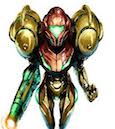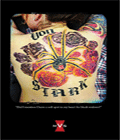http://www.independent.co.uk/news/scien ... 07826.html
Stem cells used to heal damaged hearts for the first time
The damaged hearts of laboratory monkeys have been successfully repaired for the first time with human stem cells in a study that could lead to the first clinical trials on patients with heart disease within the next four years, scientists said.
The study, published in the journal Nature, demonstrates that human stem cells can be grown in large enough quantities to form beating cardiac muscle tissue which can be stored in frozen form until needed for a transplant operation, the researchers said.
Experiments involving the injection of human stem cells into the damaged hearts of mice, rats and guinea pigs have already shown the potential for treating heart disease but the latest study is the first to prove its potential in a non-human primate species, the pintail macaque monkey.
“The main significance of this study is that it shows for the first time that we can do heart regeneration at a scale that the world has never seen before,” said Charles Murry, professor of pathology and bioengineering at the University of Washington in Seattle.
“We’re able to grow large amounts of human heart muscle cells in a dish. We can grow them in the billions, we can freeze them and keep them in cold storage until we can use them and then we can transplant them into the heart of a large animal that really mimics the human condition well,” Professor Murry said.
Stem cells, sometimes known as the “master cells” of the body, are seen as offering new kinds of treatments for incurable or progressive illnesses, from heart disease to Parkinson’s, but there are still immense practical and safety issues before they can be widely introduced.
For treating human heart disease, for instance, it will be necessary to grow billions of cardiac muscle cells in the laboratory from stem cells and to freeze them without impairing their ability to regenerate damaged cardiac muscle once they have been implanted into a patient, Professor Murry said.
“The principal focus is to understand stem cells to the point where we can grow large amounts of beating human heart muscle in a dish, to learn the science of how they differentiate and then to harness them in such a way that we can cure human heart disease ultimately,” he said.
“Before this study, it was not known if it is possible to produce sufficient numbers of these cells and successfully use them to re-muscularise damaged hearts in a large animal whose heart size and physiology is similar to that of the human heart,” he explained.
The study was carried out on just seven macaque monkeys suffering from a condition that simulated human heart disease. In each case, the animal showed an improvement with the implanted human stem cells leading to an average 40 per cent repair of the damaged tissue.
After three months, the implanted cells appeared to have fully integrated with the monkey’s own cardiac tissue, beating in synchrony and with the primate’s blood vessels growing into and nurturing the replacement cells.
“Once in the heart we’ve shown they survive, that they are able to organise themselves into new heart muscle and they will connect with the surrounding cardiac muscle cells and beat in synchrony,” Professor Murry said.
“The long-term goal is to get the heart to heal by muscle regeneration instead of forming scar tissue after a patient has a heart attack,” he said.
Although the monkeys showed no adverse symptoms relating to the transplant, the scientists did detect an irregular heartbeat within two to three weeks following the transplant, which later disappeared as the transplanted cells became more electrically stable, they said.
Despite this, the results open the way for human clinical trials within the next few years, said Michael Laflamme, professor of pathology at Washington University.
“The results show we can now produce the number of cells needed for human therapy and get formation of new heart muscle on a scale that is relevant to improving the function of the human heart,” Professor Laflamme said.
Damn, breakthroughs galore
Stem cell mania
18 posts
• Page 1 of 2 • 1, 2
Stem cell mania
Last edited by yoda you can call me on Jun 6th, '14, 13:51, edited 2 times in total.
The Matrix Has You






-

yoda you can call me - Under The Influence

- Posts: 4048
- Joined: Oct 14th, '13, 10:47
- Location: Dagobah
- Gender: Male
Re: Stem cells used to heal damaged hearts for the first tim
This is pretty amazing. Science ftw
" Life can change your directions, even when you ain't planned it
All you can do it handle it, worst thing you can do is panic
Use it to your advantage, avoid insanity manage
To conquer, every obstacle, make impossible possible
Even when winning illogical, losing is still far from optional.." -T.I.
All you can do it handle it, worst thing you can do is panic
Use it to your advantage, avoid insanity manage
To conquer, every obstacle, make impossible possible
Even when winning illogical, losing is still far from optional.." -T.I.
-

TheBoss123 - Soldier

- Posts: 1169
- Joined: Oct 11th, '13, 01:26
- Location: Planet Zebes
- Gender: Male
Re: Stem cells used to heal damaged hearts for the first tim
WE WILL LIVE FOREVER BE READY PEOPLE
s/o to Eedee Python CP Horse Snake Pain SaJn Silver Cement Excitaz PK Rolly GW EG Charlotte Kasia Mel Wiz Solace TRex SliK Aone Atone Trimss Menzo Geno Fish Jaba Detroit Blogs Based lil_b IBR DA! Mono ROM NRG Bigray Hesky Francesco Yoda Noddy Raul
Just Silver wrote:I think every guy should massage their prostate at least once
-

mdemaz - Addict

- Posts: 10208
- Joined: Dec 6th, '10, 12:09
- Location: Brisbane, Australia
- Gender: Male
Re: Stem cells used to heal damaged hearts for the first tim
This is incredible but every time I hear a story like this I just get more angry that we don't have hoverboards yet 


Dave! Pull up your pants! We need an Ambulance!
-

Meminem - Trailer Trash

- Posts: 188
- Joined: Dec 18th, '13, 03:07
- Location: England
- Gender: Female
Re: Stem cells used to heal damaged hearts for the first tim
Meminem wrote:This is incredible but every time I hear a story like this I just get more angry that we don't have hoverboards yet
DUDE I KNOW!

Edit: CHICK I KNOW!!!

Solace wrote:Finna catch Tony brushing his teeth in the middle of chugging Jack Daniels

#Slumerican
-

TonyTilt - Renegade

- Posts: 2570
- Joined: Jan 5th, '12, 21:12
- Location: Slumerica(Ohio)
- Gender: Male
Re: Stem cells used to heal damaged hearts for the first tim
Meminem wrote:This is incredible but every time I hear a story like this I just get more angry that we don't have hoverboards yet

Stem cell research has really made a splash this year like, here's another one
http://www.independent.co.uk/news/scien ... 12674.html
New infertility treatment could grow sperm from skin cells
Infertile men who do not produce enough sperm to have children of their own could in the future be offered a new form of treatment based on converting their skin cells into the sperm-making tissue that is missing in their testicles, scientists said.
A study has found that it is possible to convert skin cells into the male “germ cells”, which are responsible for sperm production in the testes, using an established technique for creating embryonic stem cells using a form of genetic engineering.
The researchers showed that stem cells derived from human skin become active germ cells when transplanted into the testes of mice even when the man suffers from a genetic condition where he lacks functioning germ cells in his own testes.
Creating sperm-producing human cells in laboratory mice will allow scientists to study in more detail the complex sequence of events during the development if the male reproductive tissue, and to understand how these developmental changes can go awry in infertile men.
“Our results are the first to offer an experimental model to study sperm development. Therefore, there is potential for applications [such as] cell-based therapies in the clinic, for example, for the generation of higher quality and numbers of sperm in a dish,” said Renee Reijo Pera of Montana State University.
“It might even be possible to transplant stem cell-derived germ cells directly into the testes of men with problems producing sperm,” said Professor Reijo Pera, who led the study published in the journal Cell Reports. However, she emphasised that further research will be needed before clinical trials can be allowed on humans.
Although the mice had functioning human male germ cells, they did not produce human sperm, Dr Reijo Pera said. “There is an evolutionary block that means that when germ cells from one species are transferred to another, there is not full spermatogenesis, unless the species are very closely related,” she explained.
About one in a hundred men suffer from azoospermia, where they fail to produce measurable quantities of sperm in the semen. The condition is responsible for about 20 per cent of cases of male infertility, which itself accounts for about half of the 10-15 per cent of couples who have difficulty conceiving naturally.
The study involved creating “induced pluripotent” stem cells by adding key genes to the skin cells of five men – three with a form of azoospermia caused by a genetic mutation on the Y chromosome and two with normal fertility. The resulting stem cells were implanted into the testes of laboratory mice where they developed normally into germ cells.
The scientists found that even the stem cells derived from the infertile men were capable to developing into human male germ cells in the mouse testes. However, the stem cells of the men with the Y chromosome mutation produced about 100 times less germ cells than the men with normal fertility, Professor Reijo Pera said.
“Studying why this is the case will help us to understand where the problems are for these men and hopefully find ways to overcome them,” Professor Reijo Pera said.
“Our studies suggest that the use of stem cells can serve as a starting material for diagnosing germ-cell defects and potentially generating germ cells.
“This approach has great potential for treatment of individuals who have genetic or idiopathic [unknown] causes for sperm-cell loss, or for cancer survivors who have lost sperm production due to [anti-cancer] treatments,” she said.
Michael Eisenberg, director of male reproductive medicine and surgery at Stanford University in California, said: “This research provides and exciting and important step for the promise of stem cell therapy in the treatment of azoospermia, the most severe form of male factor infertility.
"In addition, it provides very intriguing possibilities for men rendered sterile after cancer treatments. Being able to efficiently convert skin cells into sperm would allow this group to become biological fathers.
The Matrix Has You






-

yoda you can call me - Under The Influence

- Posts: 4048
- Joined: Oct 14th, '13, 10:47
- Location: Dagobah
- Gender: Male
Re: Stem cells used to heal damaged hearts for the first tim
Meminem wrote:This is incredible but every time I hear a story like this I just get more angry that we don't have hoverboards yet
But I thought hoverboards already exist? http://www.youtube.com/watch?v=A4vE_vpkr90
anyways, everybody's gonna die.
ADD ME ON PS4: gutawafang
Currently playing: Destiny

TR Rap Battle Record: 23-8
Currently playing: Destiny

TR Rap Battle Record: 23-8
-

gutawafang - Pill Popper

- Posts: 9474
- Joined: Dec 13th, '07, 08:01
- Location: Lion City
- Gender: Male
Re: Stem cells used to heal damaged hearts for the first tim
gutawafang wrote:Meminem wrote:This is incredible but every time I hear a story like this I just get more angry that we don't have hoverboards yet
But I thought hoverboards already exist? http://www.youtube.com/watch?v=A4vE_vpkr90


Dave! Pull up your pants! We need an Ambulance!
-

Meminem - Trailer Trash

- Posts: 188
- Joined: Dec 18th, '13, 03:07
- Location: England
- Gender: Female
Re: Stem cells used to heal damaged hearts for the first tim
I had to take a course on genetics this semester. :s Stem cells are so resourceful to everyone because they don't actually belong to "anyone." Yet. Much like O blood. Universal donar possibilities.
-

Maddie - Closet Cleaner

- Posts: 20
- Joined: May 2nd, '14, 22:02
- Gender: Female
Re: Stem cells used to heal damaged hearts for the first tim
http://www.independent.co.uk/news/scien ... 96400.html
Human stem cells successfully treat multiple sclerosis in mice
Human stem cells successfully treat multiple sclerosis in mice
Human stem cells have been used successfully to treat multiple sclerosis in mice. The treated mice were able to walk and run around normally while untreated animals continued to be paralysed by the disease, scientists said.
The researchers believe the findings are promising enough to move to clinical trials on patients in the hope of developing effective treatments for this incurable and progressively debilitating disorder of the nervous system, which affects about 100,000 people in the UK.
The study involved injections of stem cells derived from human embryos and were compared with stem cells from bone marrow, which are already being used in clinical trials for the treatment of multiple sclerosis. The embryonic stem cells significantly outperformed the bone marrow stem cells, said Robert Lanza, chief scientific officer of the Advanced Cell Technology, a Massachusetts-based biotechnology firm.
Multiple sclerosis is caused by the destruction of the outer fatty myelin sheath that surrounds and insulates individual nerve cells. The injected stem cells appear to stop the damage and help to restore nerve function, Dr Lanza said.
“The cells not only reduced the clinical symptoms of multiple sclerosis but prevented demyelination, which disrupts the ability of the nervous system to communicate, resulting in a wide range of symptoms in patients, including blurred vision, loss of balance, slurred speech, tremors, numbness, extreme fatigue, paralysis and blindness,” he said.
The stem cells used in the study, published in the journal Stem Cell Reports, belong to a class known as mesenchymal stem cells, which normally form the tissues of the brain and spinal cord.
“Although there is currently no cure for MS, we are excited about the unique anti-disease abilities of these cells and feel that they may be well suited for the clinical treatment of multiple sclerosis,” Dr Lanza said
The Matrix Has You






-

yoda you can call me - Under The Influence

- Posts: 4048
- Joined: Oct 14th, '13, 10:47
- Location: Dagobah
- Gender: Male
Re: Stem cells used to heal damaged hearts for the first tim
http://www.independent.co.uk/news/scien ... 96883.html
Human stem cells successfully transplanted into pigs
Human stem cells successfully transplanted into pigs
Scientists have successfully transplanted human stem cells into pigs that were especially genetically modified for the purpose. Once implanted, the cells thrived, leading the researchers to believe they are one step closer to finding treatments for a number of incapacitating human diseases.
One of the major hurdles in stem cell research is the rejection of transplanted cells by the hosts. The ability to ensure that pigs will accept human transplants is a major leap forward for research into stem cell therapy, and could aid in developing treatments for patients suffering from severe immune deficiency.
Research into the possibilities of regenerative medicine has previously relied heavily on rodents as test animals. However, significant differences between the immune systems of mice and those of humans has limited the applicability of the findings.
“Many medical researchers prefer conducting studies with pigs because they are more anatomically similar to humans than other animals, such as mice and rats,” according to Randall Prather, one of the authors of the study and Curators Professor of reproductive physiology at the University of Missouri.
“Physically, pigs are much closer to the size and scale of humans than other animals, and they respond to health threats similarly. This means that research in pigs is more likely to have results similar to those in humans for many different tests and treatments.”
Prather led the development of the special line of genetically modified pigs used in the study. The animals have a compromised immune system which mimics that of human patients with immune deficiency problems and ensures that the transplanted cells are not rejected. Provided the pigs can be protected from exposure to pathogens, they could be used to trial stem cell therapies as well as whole-organ transplants.
The Matrix Has You






-

yoda you can call me - Under The Influence

- Posts: 4048
- Joined: Oct 14th, '13, 10:47
- Location: Dagobah
- Gender: Male
Re: Stem cell mania
illuminati
NIGGAGANG: takeover 2014.
GANG:
Rollef$en, €anadaPure, Blog$ Mcgoo$h, $atan, €harlotte, Never_€nough, Tru€ Wiz, €xcitaz, D€rdyPK, Th€VipBro, N-R-G, md€maz, €€D€€, $nakebeast (FULL MEMBER), HotDawg, Pudding, Aton€, Mistah €vil, Jo$himura
R.I.P. to my homeboy £I£BuffDa[OG], we done lost you on the streets but you aint forgotten hombre.
SNITCH:
Stanbase

viewtopic.php?f=29&t=170027
#FUCKJABBA
GANG:
Rollef$en, €anadaPure, Blog$ Mcgoo$h, $atan, €harlotte, Never_€nough, Tru€ Wiz, €xcitaz, D€rdyPK, Th€VipBro, N-R-G, md€maz, €€D€€, $nakebeast (FULL MEMBER), HotDawg, Pudding, Aton€, Mistah €vil, Jo$himura
R.I.P. to my homeboy £I£BuffDa[OG], we done lost you on the streets but you aint forgotten hombre.
SNITCH:
Stanbase

viewtopic.php?f=29&t=170027
#FUCKJABBA
-

cement - Soldier

- Posts: 989
- Joined: Dec 15th, '13, 17:38
- Location: $tunna Island
- Gender: Male
Re: Stem cell mania
cement wrote:illuminati
That's the only reason they're probably buzzing tbfh
The Matrix Has You






-

yoda you can call me - Under The Influence

- Posts: 4048
- Joined: Oct 14th, '13, 10:47
- Location: Dagobah
- Gender: Male
Re: Stem cells used to heal damaged hearts for the first tim
Maddie wrote:I had to take a course on genetics this semester. :s Stem cells are so resourceful to everyone because they don't actually belong to "anyone." Yet. Much like O blood. Universal donar possibilities.
It's 2014. Does anyone really need to be told how Stem Cells work?
- SliK
- Under The Influence

- Posts: 4980
- Joined: Dec 17th, '09, 06:03
Re: Stem cell mania
Stem cell trial cures blindness for many patients - with no side effects
Source
A pioneering treatment for progressive blindness has been proved safe three years after patients were injected with stem cells derived from human embryos, a study has found.
More than half of the patients with macular degeneration – where the eye’s light-sensitive cells are progressively destroyed – experienced a significant improvement in their eyesight, but none showed any adverse effects due directly to the transplant of the embryonic cells, scientists said.
Doctors injected the stem cells into the eyes of 18 patients – nine with Stargardt’s macular dystrophy and nine with dry, age-related macular degeneration – with the ultimate aim of repairing damaged photoreceptors in the retina at the back of the eye.
However, the more immediate goal of the phase one clinical trial was to test the safety and tolerability of the operation, which involved injections with three different doses – 50,000, 100,000 and 150,000 cells – said Robert Lanza, chief scientific officer of Advanced Cell Technology in Marlborough, Massachusetts.
No adverse safety issues were found during the three years that the 18 patients were monitored. There was also evidence that the injected cells had survived, and had contributed to an improvement in the eyesight of some patients, Dr Lanza said.
“About half of the patients had an improvement in visual acuity of three lines or more, which corresponds to a doubling of the visual angle, and is generally accepted as clinically significant,” Dr Lanza said.
“To understand what this means, let’s assume you’re six feet tall. If a patient can now see you after treatment, then before treatment you would have to have been 12 feet high – taller than a flagpole – in order for them to see you,” he said.
One 75-year-old rancher from Kansas, who was effectively blind in one eye before the treatment, improved to such an extent that he was able to ride a horse again. Other patients reported that they could use their computers or could go shopping, Dr Lanza said.
Follow-up testing found that 10 out of the 18 patients experienced substantial improvements in how well they could see, according to the study published in the journal The Lancet.
Further clinical trials will be carried out to test the efficacy of the treatment.
Source
The Matrix Has You






-

yoda you can call me - Under The Influence

- Posts: 4048
- Joined: Oct 14th, '13, 10:47
- Location: Dagobah
- Gender: Male
18 posts
• Page 1 of 2 • 1, 2
Who is online
Users browsing this forum: No registered users
